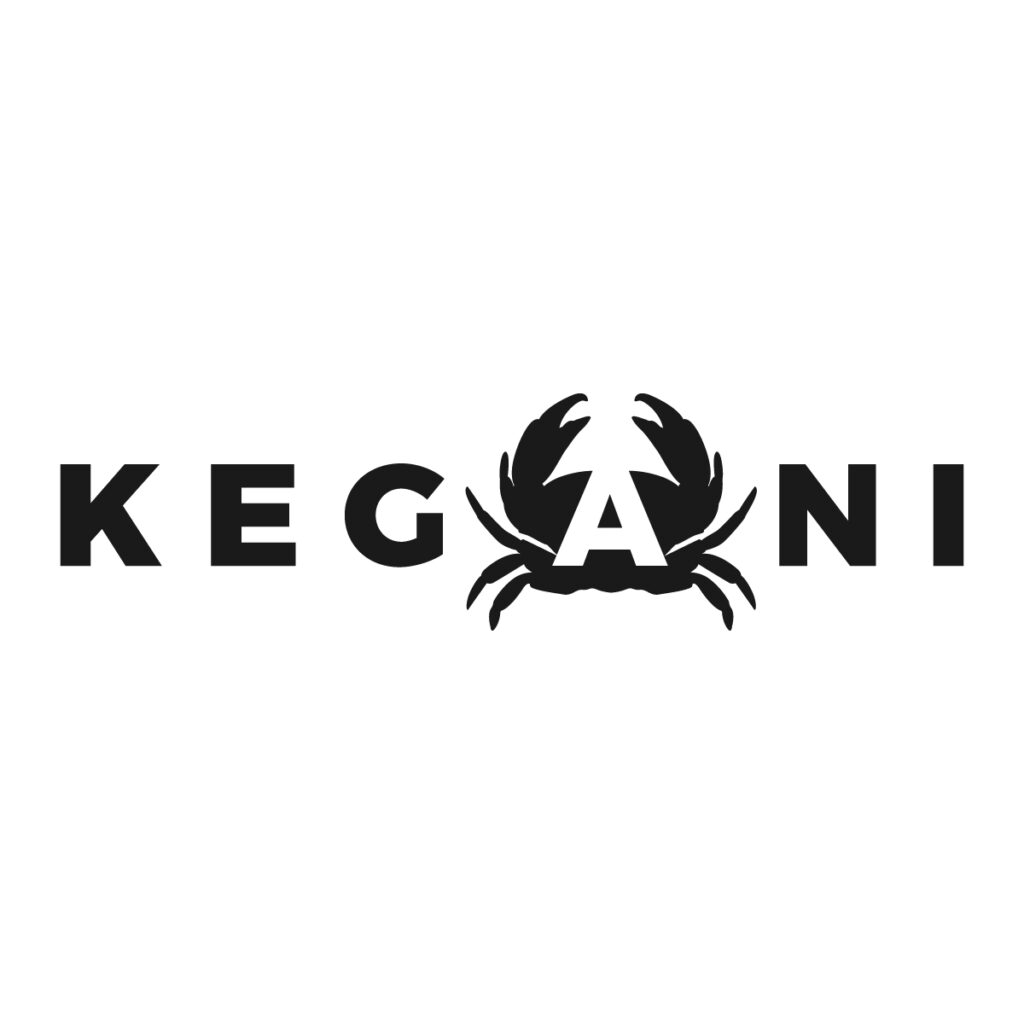As a knife seller, you know that a knife’s handle is more than just a functional component—it’s the key point of contact between the user and the blade.
But with so many handle materials available, it can be challenging to decide which ones suit your inventory best.
At Kegani, we understand how important it is to choose the right materials. That’s why we’ve created this comprehensive guide to knife handle materials, categorized into Natural, Synthetic, and Hybrid options.
This will help you make informed sourcing decisions and cater to a broader customer base.
Why Handle Materials Matter

The right handle material isn’t just about looks—it directly affects:
- Durability: How well does the handle material hold up over time, especially with frequent use or exposure to extreme conditions?
- Comfort: Does it feel good in the hand? Is it ergonomic and secure, even in wet or cold conditions?
- Aesthetics: Does the material align with your target customers’ preferences?
- Performance: Does the material enhance the knife’s usability for specific applications (e.g., survival, kitchen, or tactical use)?
Understanding these factors will help you select the best handle materials that meet both functional and aesthetic expectations.
Natural Materials: Timeless and Organic
Natural materials offer a sense of tradition, warmth, and uniqueness. They are often sought after for their organic feel and classic aesthetics, though they tend to require more maintenance than synthetic options.
1. Wood: The Traditional Favorite
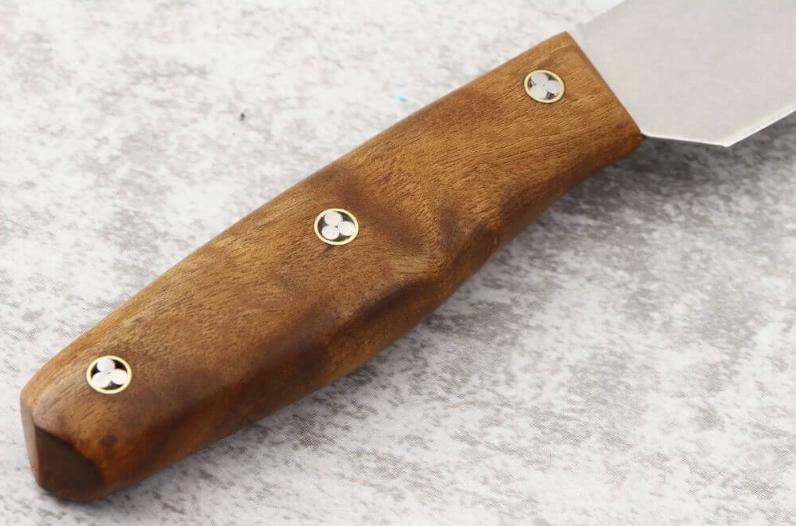
Manufacturing Process: Handles are shaped, sanded, and finished from solid wood or laminated wood. Stabilizing processes (e.g., resin impregnation) can be used to enhance durability.
Key Properties:
- Warm, comfortable grip with a natural feel.
- Beautiful grain patterns that make each knife unique.
- Some exotic woods (e.g., cocobolo, ironwood, or ebony) are highly prized for their luxurious look and feel.
Cost: Varies widely—from affordable hardwoods to expensive exotic species.
Ideal Applications: Traditional knives, kitchen knives, and high-end custom designs.
Considerations:
- Requires regular maintenance (e.g., oiling) to prevent drying, cracking, or warping.
- Less resistant to moisture and extreme conditions unless stabilized.
2. Bone and Antler: Rustic and Durable
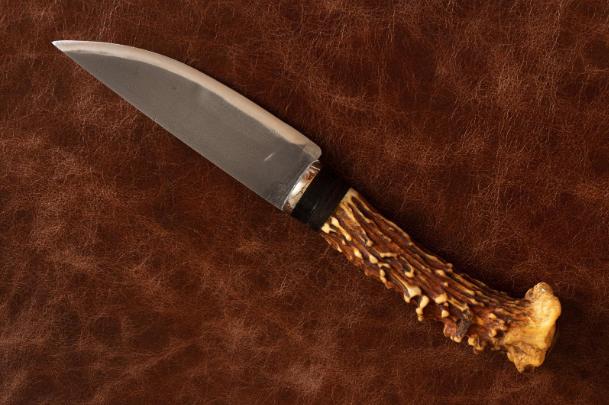
Manufacturing Process: Sourced from natural bone, antler, or horn, these materials are carved and polished for a smooth finish.
Key Properties:
- Offers a unique, rustic appearance.
- Dense and durable, with a comfortable grip.
- Often dyed or textured for added visual appeal.
Cost: Mid to high range, depending on the rarity and quality of the material.
Ideal Applications: Hunting knives, traditional folding knives, and collectible pieces.
Considerations:
- Can shrink, crack, or discolor over time if not properly maintained.
- Prone to brittleness in very dry environments.
3. Leather: A Classic Touch
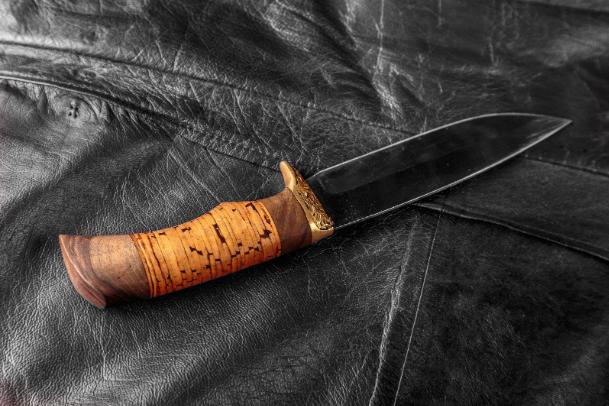
Manufacturing Process: Stacked layers of leather are compressed, shaped, and treated to form the handle.
- comfortable feel with a traditional aesthetic.
- Provides a solid, non-slip grip when properly treated.
Cost: Moderate, depending on leather quality.
Ideal Applications: Hunting knives, survival knives, and vintage-inspired designs.
Considerations:
- Requires regular maintenance to prevent drying or cracking.
- Not as durable or moisture-resistant as synthetic materials.
4. Abalone and Mother of Pearl: The Luxurious Decorative Option
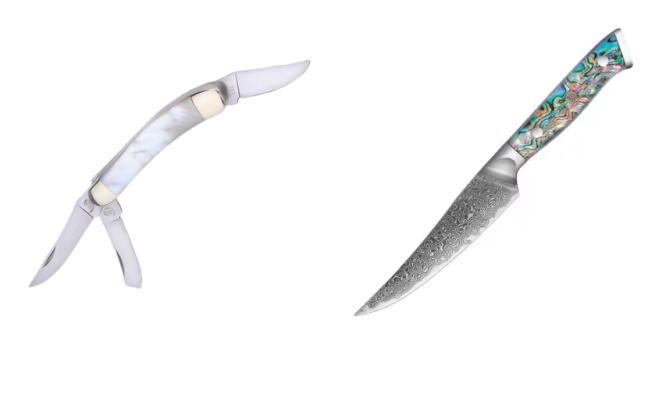
Manufacturing Process: Sourced from natural shells, these materials are cut and polished for use as inlays or full handles.
Key Properties: Highly decorative, with iridescent patterns that make knives unique.
Cost: High, due to the rarity and labor-intensive processing.
Ideal Applications: Collectible knives and high-end custom pieces.
Considerations: Fragile and not suitable for heavy-use knives.
Start Working with a Professional Now
Synthetic Materials: Engineered for Performance
Synthetic materials are designed to provide excellent durability, water resistance, and customizability, often outperforming natural materials in extreme conditions.
5. G10: The All-Purpose Workhorse
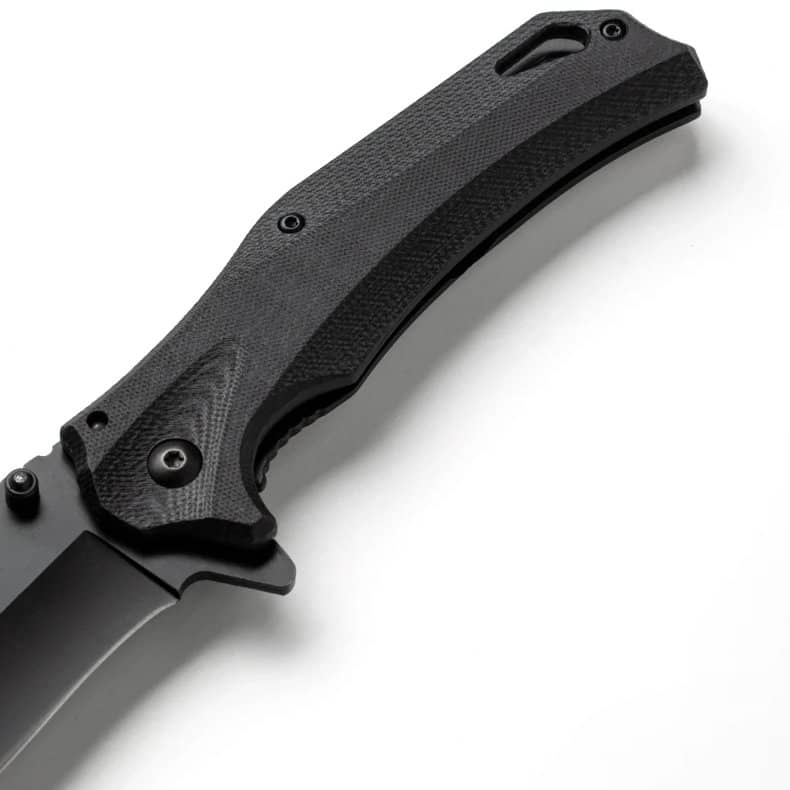
Manufacturing Process: Fiberglass cloth is soaked in epoxy resin, layered, and compressed under heat and pressure.
Key Properties:
- Lightweight, incredibly strong, and water-resistant.
- Available in a wide range of colors, textures, and patterns.
- Resistant to chemicals, moisture, and impact.
Cost: Affordable, typically ranging from $5 to $20 per handle.
Ideal Applications: EDC (Everyday Carry) knives, tactical knives, survival knives, and kitchen knives.
Considerations:
- Lacks the luxurious feel of natural materials.
- Grip may become slippery in wet conditions unless textured.
6. Carbon Fiber: Lightweight and Luxurious
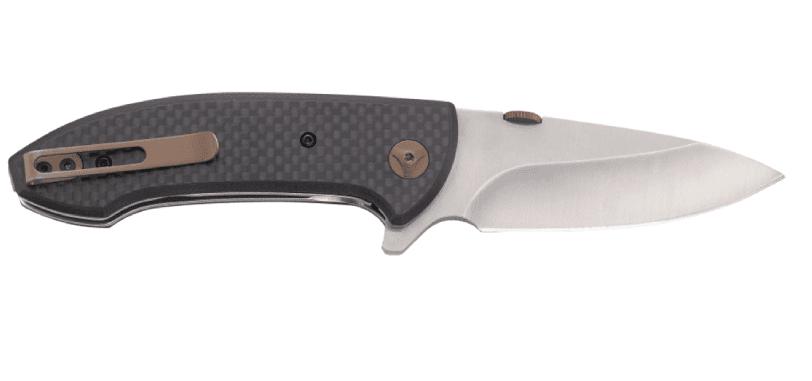
Manufacturing Process: Thin strands of carbon are embedded in resin and compressed under heat and pressure.
- lightweight, and corrosion-resistant.
- Sleek, high-tech appearance.
Cost: Expensive, ranging from $20 to over $100 per handle.
Ideal Applications: High-end gentleman’s folders, dress knives, and lightweight tactical or kitchen knives.
Considerations:
- Prone to brittleness and cracking if subjected to heavy impact.
- Slippery when wet unless textured.
Read More:
G10 vs Carbon Fiber Handles
7. FRN (Fiberglass Reinforced Nylon): Budget-Friendly Durability
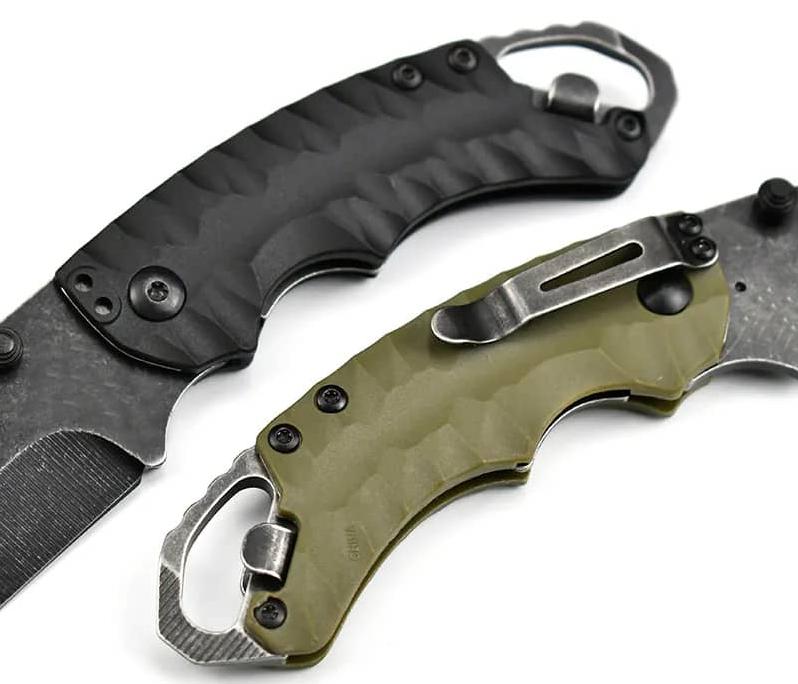
Manufacturing Process: A nylon polymer is reinforced with glass fibers for added strength.
- Lightweight, durable, and inexpensive.
- Resistant to moisture, chemicals, and impact.
Cost: Budget-friendly, commonly used in entry-level knives.
Ideal Applications: Folding knives, EDC knives, and tactical knives.
Considerations:
- Has a less premium feel compared to other materials.
- Grip may not be as secure as rubberized options.
8. Grivory: Tough and Heat-Resistant
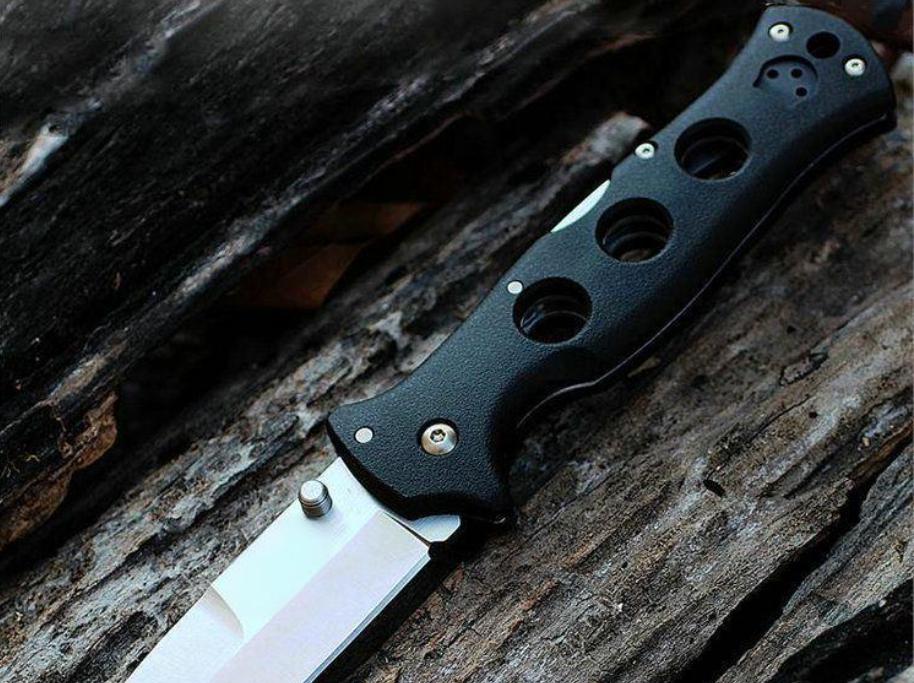
Manufacturing Process: A polyamide material processed via injection molding or extrusion.
Key Properties: Lightweight, impact-resistant, and heat-resistant, with good chemical resistance.
Cost: Economical compared to premium alternatives.
Ideal Applications: Used in high-performance working knives and by brands like Benchmade and Cold Steel.
Considerations: Less stiff than G10, with moderate grip.
Read More:
Grivory vs G10 Handle Material
9. Lexan: Transparent Toughness
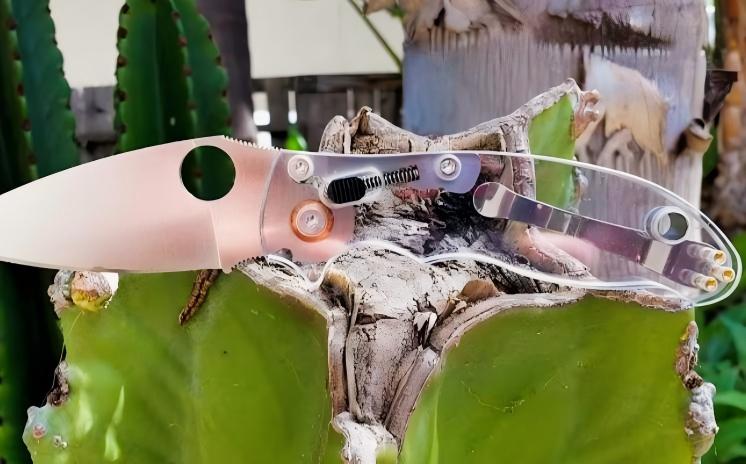
Manufacturing Process: A polycarbonate plastic, often injection molded or machined from sheets.
Key Properties: Exceptionally high impact resistance, optical clarity (can be transparent or tinted), lightweight, and good dimensional stability.
Cost: Moderate, generally more than FRN but less than premium G10 or Carbon Fiber.
Ideal Applications: Custom knife handles where unique aesthetics (transparency, embedded objects), extreme impact absorption, or lighter weight is desired; custom sheaths.
Considerations: More prone to scratching than FRN or G10; Smoother surface may require texturing for optimal grip.
Start Working with a Professional Now
Hybrid Materials: The Best of Both Worlds
Hybrid materials combine the aesthetics of natural materials with the durability and performance of synthetics. These materials are ideal for customers who want a balance of beauty and practicality.
10. Micarta: Timeless and Versatile
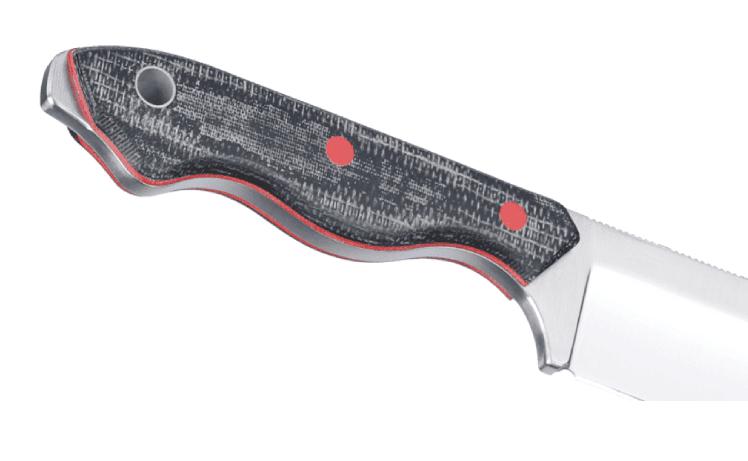
Manufacturing Process: Layers of natural fabrics (linen, canvas, or paper) are impregnated with resin and compressed under heat and pressure.
Key Properties:
- Durable, lightweight, and customizable.
- Mimics the appearance of natural materials while offering enhanced performance.
Cost: Mid-range, more expensive than FRN or G10.
Ideal Applications: Outdoor knives, EDC knives, and custom designs.
- Can absorb moisture if not sealed.
- May stain or discolor over time.
Read More:
Micarta vs G10 Handle Material
11. Richlite: The Eco-Friendly Choice
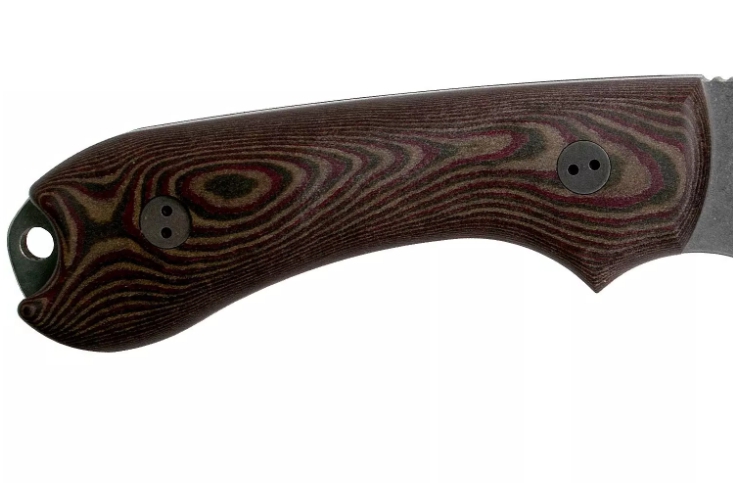
Manufacturing Process: Layers of recycled paper are impregnated with resin, then compressed and baked into a dense material.
Key Properties:
- Sustainable, water-resistant, and heat-resistant.
- Smooth texture with a natural look.
Cost: Mid-range, more affordable than exotic woods.
Ideal Applications: Custom knives, kitchen knives, and EDC knives.
Considerations:
- Limited color and pattern options.
- Can be sensitive to extreme heat.
12. Pakkawood (Stabilized Wood): Durable and Beautiful
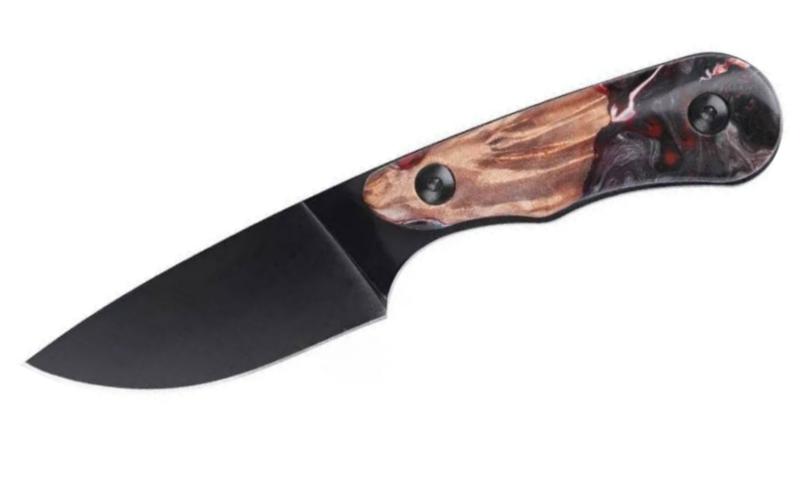
Manufacturing Process: Real wood is impregnated with resin to create a composite that combines the beauty of wood with enhanced performance.
Key Properties:
- Moisture-resistant and durable.
- Retains the organic look and feel of natural wood.
Cost: Mid-range, depending on the type of wood used.
Ideal Applications: Kitchen knives, outdoor knives, and EDC knives.
Considerations:
- Still requires occasional maintenance to retain its appearance.
Sourcing Considerations for Sellers
When sourcing knives, keep the following tips in mind:
- Target Market: Match materials to your audience (e.g., budget-friendly FRN vs. high-end carbon fiber).
- Quality Control: Inspect materials for consistency and durability.
- Customization: Offer options for textures, patterns, and colors to expand your product line.
- Sustainability: Consider eco-friendly materials like Richlite if sustainability matters to your customers.
- Certifications: Verify materials meet safety and environmental standards.
Start Working with a Professional Now
Trends in Knife Handle Materials
To remain competitive, it’s important to stay on top of current trends in the knife industry. Here are some trends to watch:
- Sustainable Materials: With increasing consumer awareness of environmental issues, materials like Richlite and stabilized woods are gaining popularity.
- Customization: Buyers are looking for unique, personalized knives. Offering custom textures, patterns, and colors can set your products apart.
- Hybrid Designs: Combining materials (e.g., wood and carbon fiber, or G10 with titanium) allows for unique aesthetics and enhanced performance.
- Weight Reduction: Lightweight materials like carbon fiber and FRN remain in demand for EDC and outdoor knives.
Kegani: Your Trusted Partner in Knife Sourcing
At Kegani, we specialize in connecting businesses with top-tier knife manufacturers in China, ensuring that you receive high-quality knives tailored to your exact specifications. Whether you’re looking to source in bulk, create custom designs, or launch your own private label brand, we provide solutions that cater to your business goals.
Here’s what sets us apart:
- Wide Range of Materials: From G10, carbon fiber, and titanium to classic wood, Micarta, and Richlite, we offer a comprehensive selection of handle materials to suit diverse market needs.
- Customizable Options: We help you stand out in the competitive knife market by offering customizable textures, colors, patterns, and designs for your knife handles.
- Flexible Business Models: Whether you’re looking for OEM (Original Equipment Manufacturing), private label solutions, or wholesale options, we’ve got you covered.
- Uncompromising Quality Control: Every knife sourced through Kegani undergoes rigorous quality checks to ensure consistency and excellence in both materials and craftsmanship.
- Competitive Pricing: By working directly with trusted manufacturers, we help you secure the best prices without compromising on quality.
- Sustainability: As demand for eco-friendly products grows, we offer access to sustainable materials such as Richlite and responsibly sourced wood.
- Expert Guidance: Our team of experts is here to assist you in navigating material options, production timelines, and market trends to ensure your success.
Ready to elevate your product offerings? Contact us today for a free consultation and quote.
